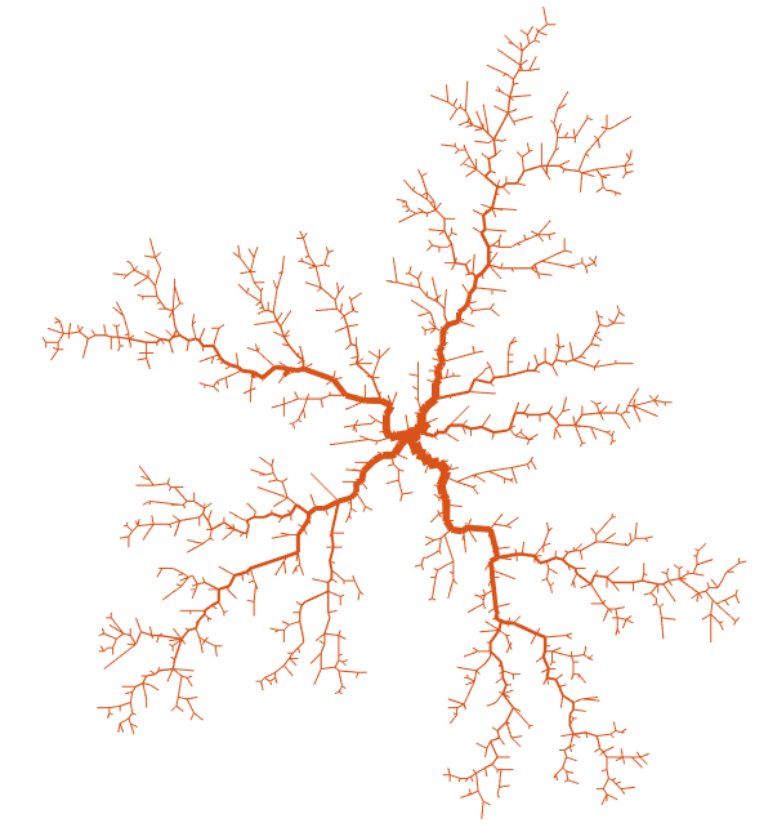Parameter estimation of network structures with application to vascular networks, 2022
Jenny Espelund Hognestad
Main content
The complex and hierarchical structure of the vascular system constitutes a main challenge in blood flow modelling, to which multiscale modelling has been a common approach. Recent publications suggest to represent large vessels as a graph structure with Hagen-Poiseuille flow in graph edges, and the intricate mesh of microscale capillaries as a porous medium with Darcy flow. However, a coupling between scales that is both mathematically and physiologically sound remains a challenge. Due to limited resolution in medical imaging devices, there is a large number of vessels below the scale of pixel size whose structure is unknown. Hence, we can only make structural and modeling assumptions about the flow distribution from macroscale to microscale vessels. In this thesis, we have investigated whether a complex network may be replaced by a simplified, coarse model with a fewer model parameters, hoping to eliminate the need to know the exact mesoscale network structure. In this respect, we estimated a set of transfer conductivity parameters on three different graph structures. A coarse network approximation based on the estimated transfer conductivity was used in an idealized model for arterial flow in brain, and compared with a reference model where the mesoscale network was represented as a graph model. The transfer conductivity decreased with radial distance R from the source node when the flow path length was associated with R. For the coarse model, we found the error to be small for all three graph structures given small pressure gradients in the porous domain. We also found the transfer conductivity to be highly dependent on the conductivity of single graph edges. Our study confirms modeling assumptions about the flow distribution being dependent on radial distance from the source node. However, the exact functional relationship will depend on the network structure. Moreover, since a significant portion of the pressure drop in the brain vasculature is over the arterioles and venules, and not in the capillaries, we claim that our coarse model can be sufficiently accurate for modelling purposes. Finally, the single graph edge influence on transfer conductivity suggests that a coarse model in the context of parameter estimation may be used for diagnostic purposes, as several medical conditions involve changes in brain vascular microstructure.
